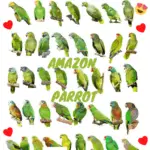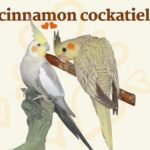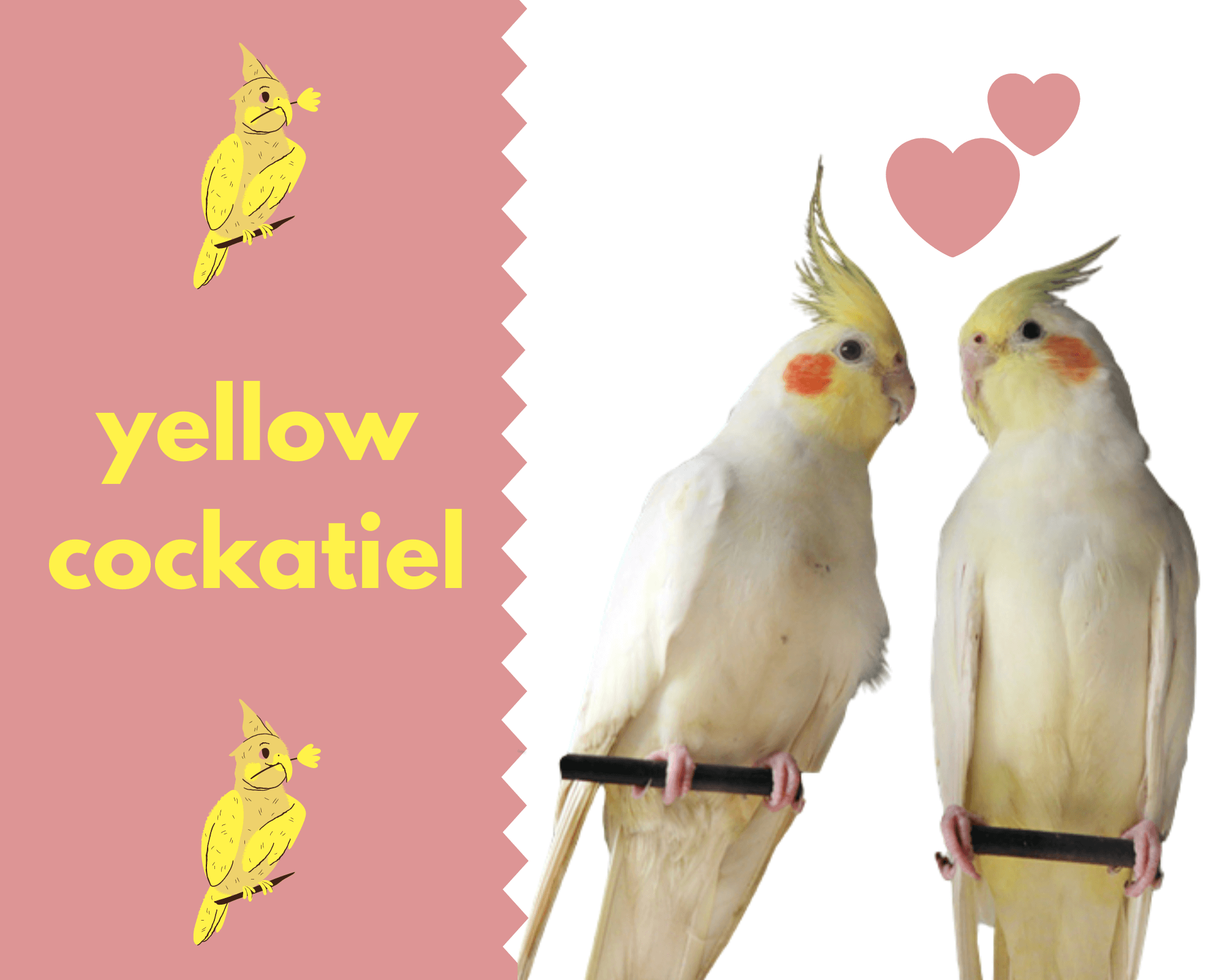
Yellow cockatiel or lutino cockatiel is one of the most beautiful genetic mutations of cockatiel colors, the most popular in the world. the Yellow cockatiel mutation is the second mutation and the second color in cockatiel.
The Lutino cockatiel parrot is the third color after the natural grey cockatiel mixed with yellow and white, the original color of the cockatiel bird in the Australian wild, which carries in its genes all the colors that later appeared in the companion cockatiel.
the emergence of the yellow cockatiel mutation is associated with birds breeding and synthesizing in homes and cages. it first appeared in the united states of America, Miami, by educator Mr. cliff and ms. moon successfully.
The first color mutation of the cockatiel appeared in 1951 in the United States of America, called a blue-gray cockatiel produced by birds (Mr. Yptman D. Putman) from San Diego, California, USA.
Melanin DYE
Eumelanin melanin, the dye responsible for the absence of the original grey in the lutino cockatiel parrot, where lipochrome and sitacin pigments are present, leading to the appearance of pale yellow and yellow color and “white to yellow” with a bright orange spot on the cheeks.
features
Lutino-type cockatiel notes the dark dye of the bird’s color, including beak, eyes, feathers, feet, skin, and nails.
the yellow cockatiel comes in pale yellow or yellow, with orange cheeks, pink legs, and red eyes, and features a dark absence of color from his body, whether beak, claws, eye, legs, or feathers.
this is due to the absence of melanin dye, which is responsible for the gray color of the bird’s body, which makes the chick come in pale yellow.
baldness at yellow cockatiel
baldness appears in lutino cockatiel, which is normal and is not considered a defect, disease, or weakness in the type of lutino cockatiel, where it is inherited by generations in different proportions. his appearance is the result of a genetic defect that appeared with the yellow mutation.
it is therefore not preferable to marry cockatiel of this characteristic to some of them, and it is preferable to marry bald lutino to the normal gray cockatiel or trimmed gray, where this genetic imbalance can be avoided, because it remains a recessive genetic characteristic, by introducing a different type in the strain, preferably the normal gray lutino and the original.
sexual differences
Source: finch forum
the eyes
the eyes of the yellow cockatiel come to in due to a lack of melanindye. this is clearly reflected in the bright light and light.
before puberty, the eyes are light red, and when it matures, the eye of the lutino becomes clearer red.
note: when the eye of the yellow is highlighted and does not appear in green, this is not a yellow cockatiel.
it’s clear bide color boom, it’s no different from the cockatiel lutino, and what distinguishes it from the cockatiel lutino is the red heine color.
it is difficult to differentiate between the sexes in the Lutino mutation before puberty.
in this color, sex is distinguished bylines in yellow or white in yellow cockatiel female.
the yellow cockatiel male has feathers in one color that is consistent either white or yellow.
Head
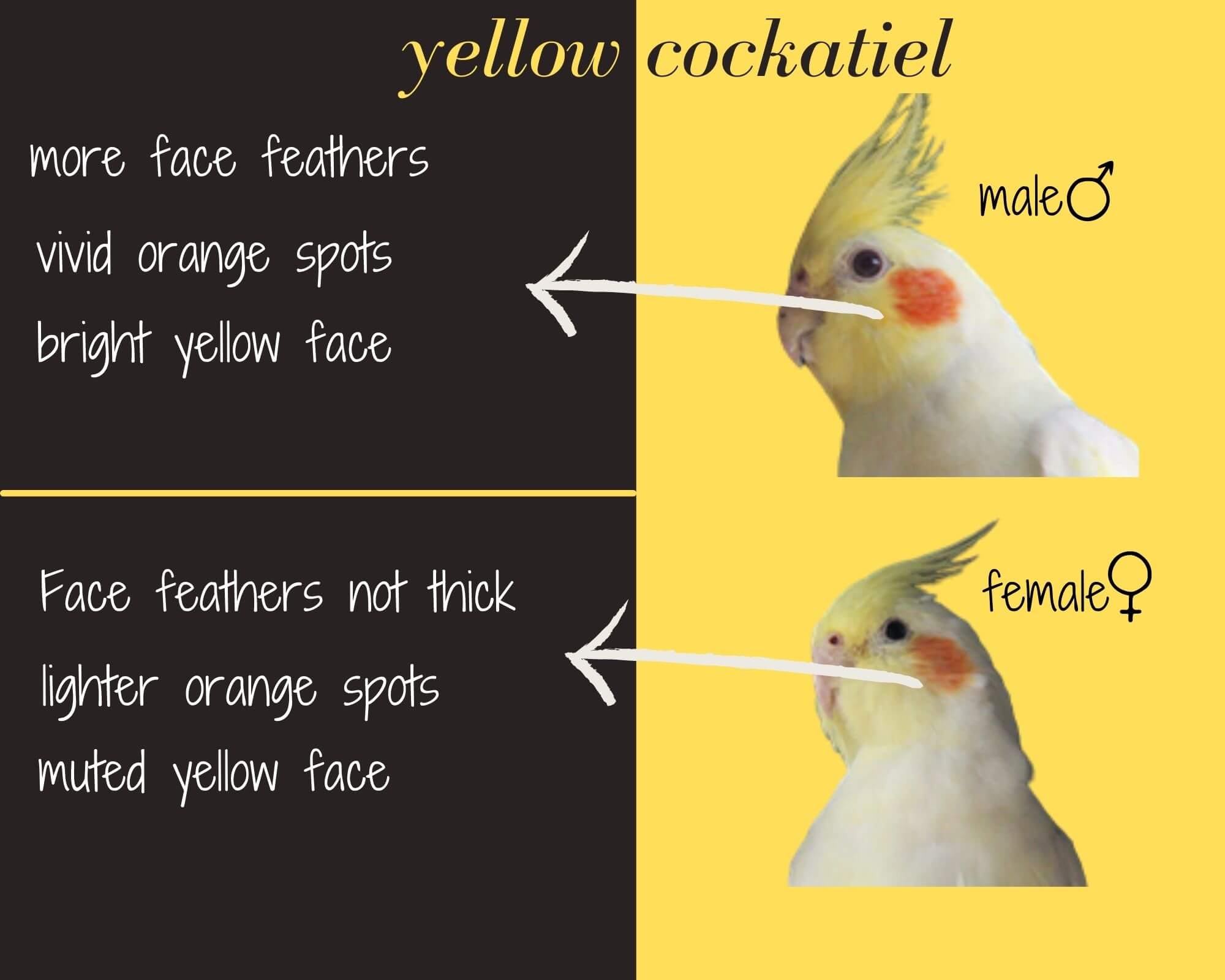
to preview the colors of the yellow cockatiel in order to set the sex on the wings, and to distinguish the species from the color mutation of claire bide, this is done by checking the red eye color of the lutino cockatiel and to check the color needs to brightly light upon the eye of the yellow cockatiel bird.
Nape, Back, Rump, Sus-Caudales
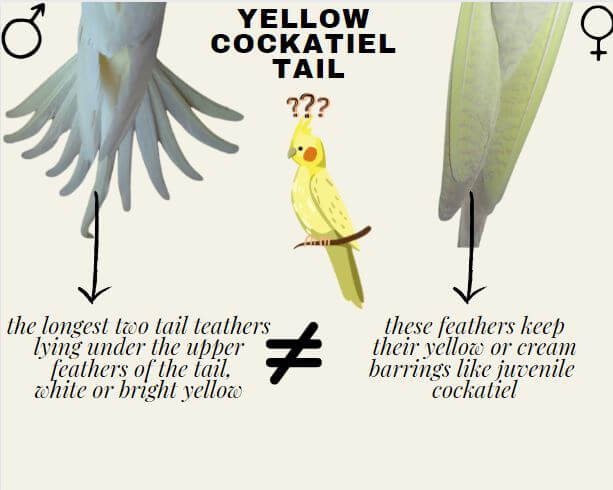
in addition to the general differences of the cockatiel bird, the male is more moving, tweeting, and more integrated with its owner. while the female remains more conservative than the male.
wings

health
Lutino cockatiel everybody likes the Lutino cockatiel, but this is a mutation that carries a very heavyweight a few days ago what being in a very big fair and exhibition of birds parrots and cockatiel with intention of finding lutino cockatiel yet to bring to my small breed but not just a lutino cockatiel and looking for a spatula yellow cockatiel.
Lutein Syndrome
if you have a yellow cockatiel at home, there are big chances that it is with the bull spot behind the head there is a condition is known as lutein of syndrome and these birds may have different symptoms they go from apple spot behind, the head to neurological problems in the blood coagulation poor feathering bad posture bad size,
if your bird is just like the bull spot, this is nothing to worry about. but if there are other symptoms the situation may change so I went to this fair looking for a good routine, and there were a lot of cockatiels Lutino.
the majority of them as a bull sport some of them as a huge bowl spot, the others have a small bald spot maybe a bit covered by the side feathers but still there not every routine of cockatiel with, the
ball spot also has the other symptoms usually not, but a yellow cockatiel with the bald spot has a bigger chance of making cheeks with some of the other problems.
from my experience, I saw that every time there’s lutino cockatiel with the ball spot the Latino cockatiel offspring is going to be with, the ball spot as well, and sometimes some of the cheeks also have some other problems, so that’s why I say that.
if you want to bring a lutino cockatiel you have to find a new Tino without. the ball spot that’s to say that from what, I saw every time a new lutino cockatiel as more say in terms of the lutino cockatiel syndrome, the ball spot is always there I have never seen a yellow cockatiel with neurological problems, that didn’t have the ball spot.
there is a lot of lutino cockatiel with the ball spot and no other symptoms, but there are no routine O’s with other symptoms and no bald spot that’s why I say that.
a good start is choosing a lutino cockatiel without the ball spot just to be safe when the mutation came out, everyone wanted a routine Okaka health and breathers try to breed as many as possible only considering.
the color they didn’t select for other things like health size just the color and so we had a lot of lutino cockatiel but the genetic pool was reduced because they, were breathing like with-like lutino cockatiel with new tneows they were most likely,
related birds and this is always bad this is bad for cockatiel and it’s bad for any other animal when you are breeding like what happened for German Shepherd dogs you know before this breed was famous, and everyone wanted one it was a normal breath with normal health like any other breed.
but when the printer started to produce as many as possible quality went down and health problems arrived in nature natural, that kind of thing doesn’t happen because,
if the bird is not perfect it can survive and the genes won’t spread over, but when we breathe in captivity with our own selections we have a responsibility we bring animals to lives so my opinion is that it’s our duty that this animal has the so not select just for what it’s good for our eyes,
but also what is good for the animal itself, as good feathers, good posture, good size, so if you want a cockatiel as bad as a companion who cares, if it’s a routine you know with the bald spot or even with other problems, it’s still an innocent Birds and deserves to be loud, and they can care of, but if you want to breed cockatoos you have to choose the right reproductively.
there is better reproductive than others and you need to find that have the good chances the best chances of making healthy cheeks good, and that have the best chances for a good life.
the bird is mixing a few feathers in the tail but it’s nothing the bird is molting and the feathers are coming back
soon, so I don’t care about that what I care about is that he big and his head is perfect, feathers are also very nice this subject is a lutino cockatiel Pierre you can see in the wings,
you can see some yellow dots and these are the size of the birds being, also Pierre this is a male so pairing it with the female, not lutino cockatiel is going to bring female lutino cockatiel and Maine’s
not lutino cockatiel.
now I have home a female ready for him it’s a PR cinnamon cockatiel so every cockatoo from them is going to be PR, but the females are going to be PR, and don’t know the mates are going to just beard making a pair using Chu Lu T nose.
is almost always a bad idea because we try to avoid like with-like but in this case, you find two subjects lutino cockatiel without a will spot with perfect feathers perfect size perfect
breeding
Raising your Cockatiel parakeet will require patience. First of all, you should know that the younger the individual, the more receptive they will be to your approaches.
When you adopt your Cockatiel, give him time during the first week to get used to his new surroundings. Just give her food and drink and avoid stressing her as much as possible.
Once she feels comfortable in her surroundings, you can start to get her attention. Offer him with your fingertips, a treat through the bars of the cage. Don’t be surprised if she refuses at first. Just offer it for five minutes, then leave the treat on the bars, and try again later.
Once she accepts to come and take the treat in your fingers, the first step will have been taken. The next will be to do the same but this time offering him directly inside the cage.
Once this second step has been taken, you will have to teach it to come to you. Equip a perch, and reach for it with one hand, while pulling it in with a treat in the other. The goal will be to gradually attract him to you and teach him to trust you.
Finally, simply replace the perch with your finger, still presenting it with a treat.
Once all of these steps have been taken, the lutino Cockatiel will start to get used to you, and even to trust you. Little by little, she will even come naturally to you, without you having to present her a treat.
You now know how to maintain and make happy a Cockatiel parakeet. As you may have seen, adopting this bird is not a decision to be taken lightly, as it will require a lot of time and maintenance.
When adopting a yellow cockatiel parrot, you have two choices: whether to choose a hand-raised (EAM) or not.
Hand-raised yellow Cockatiels have been educated to be accustomed to humans, and to come easily to him, to land on a shoulder or an outstretched hand for example. They obviously cost more to buy, but you can also raise your Cockatiel yourself.
RARE YELLOW Cockatiel showering
Source:barbarian instincts
in captivity
In captivity, the yellow Cockatiel bird will need a spacious cage. The bigger the cage, the happier the Cockatiel will be, so don’t hesitate to look wide.
In its cage, it will need many toys because, like many parakeets and parrots, the yellow Cockatiel likes to nibble anything that passes under its beak. However, avoid mirrors, which are considered dangerous to their mental health.
The yellow Cockatiel will also appreciate that you put a tub of lukewarm water once a day, for its hygiene and just to splash around in the water.
Also, remember to place his cage in the most lively room in the house. As this bird is very social, it will indeed need to have as much presence as possible around it. Otherwise, he can easily get bored and even depressed.
The Cockatiel parakeet being a fairly active bird will need to spread its wings and fly at least one hour a day.
It is therefore essential to ensure that they can fly safely. So pay attention to electric cables, but also to other animals. A cat or a dog with a hunting instinct could be made to want to make four hours of it. If you already have animals that might want to hunt a Cockatiel, adopting one is definitely not a wise choice.
Finally, be prepared for noise, because Cockatiel parakeets, despite their many qualities, are noisy birds. Not recommended if you live in an apartment or if you or your entourage cannot stand the noise.
Yellow cockatiel price
how much does cockatiels cost:
The price of the Lutino Cockatiel ranges from 150$ to 200$
Feeding
The Cockatiel loves seeds. Seed mixes sold in specialty stores will contain everything the Cockatiel needs.
Fruits and vegetables, especially green vegetables, will provide him with all the vitamins necessary for his good health. If you can’t give him fruit, apple juice diluted in water can be used instead.
However, you should exclude parsley, avocado, beets, potatoes, garlic, shallots, mushrooms, and citrus fruits.
You can supplement her with millet once or twice a week, as well as cuttlefish bones and mineral blocks to provide her with the calcium and minerals she will need. She will also need plenty of fresh, clean water.
Pet Funny Lutino Cockatiel Bird Biting of Fingers
Source: Fritids Tur
Cockatiel Mutation
More information about other cockatiel mutations:

